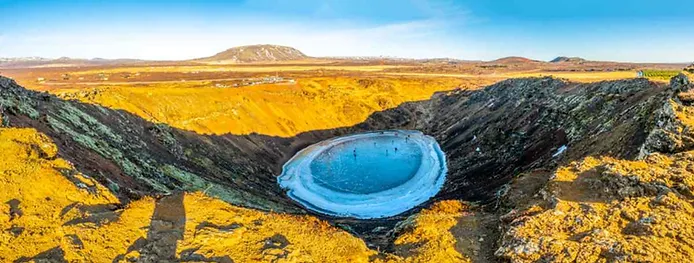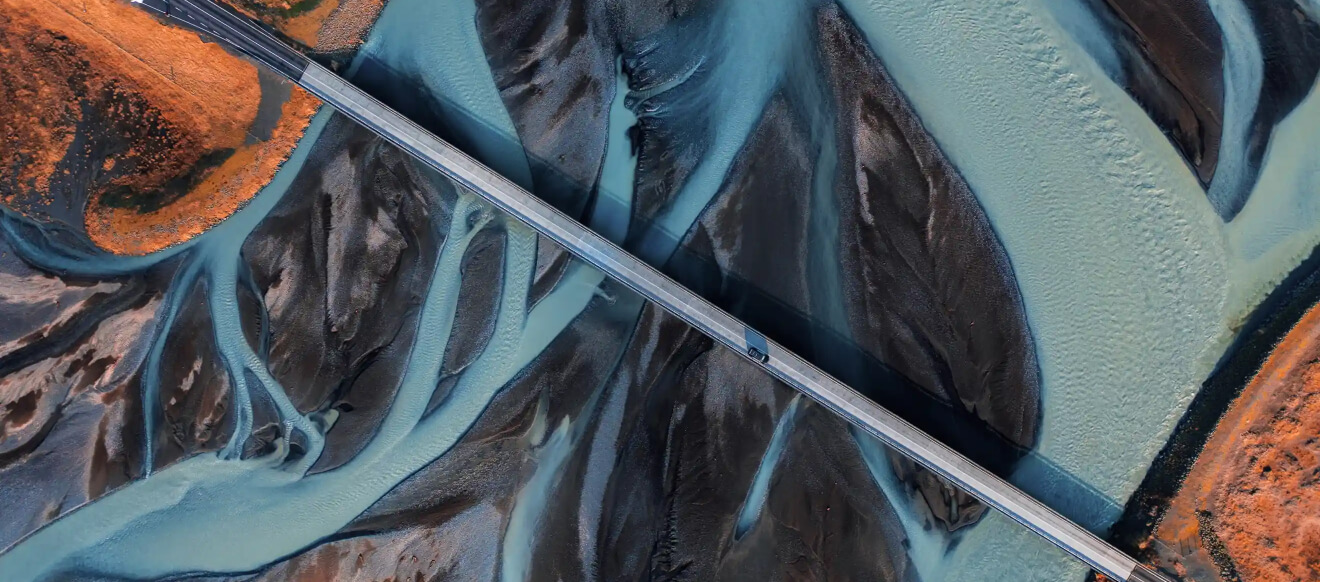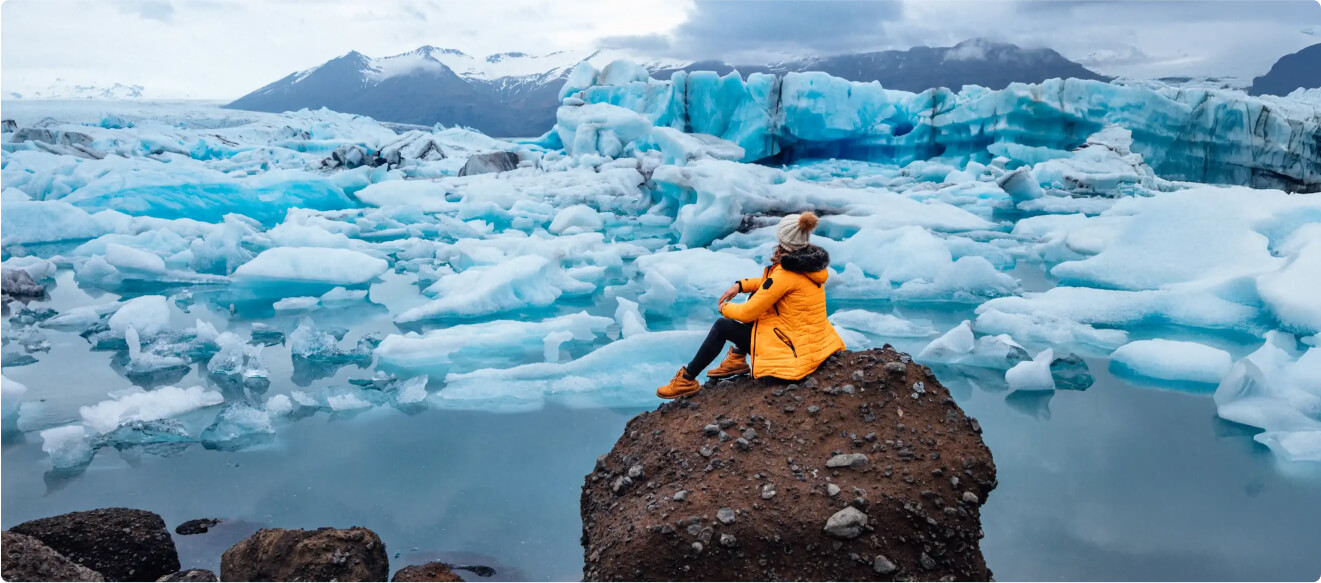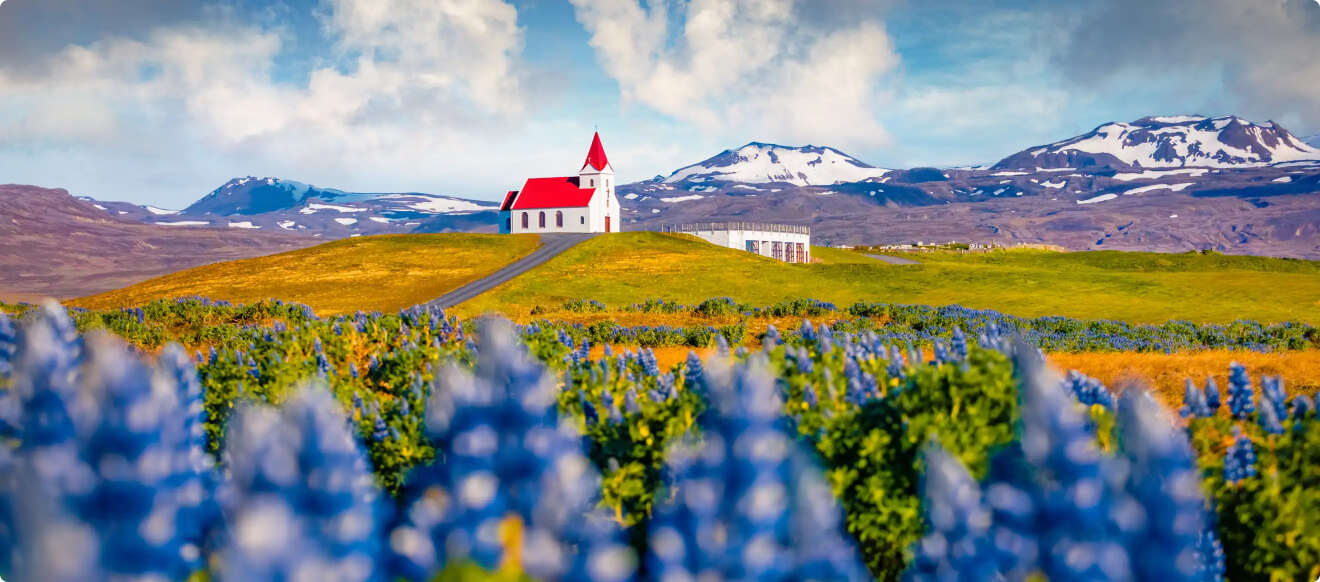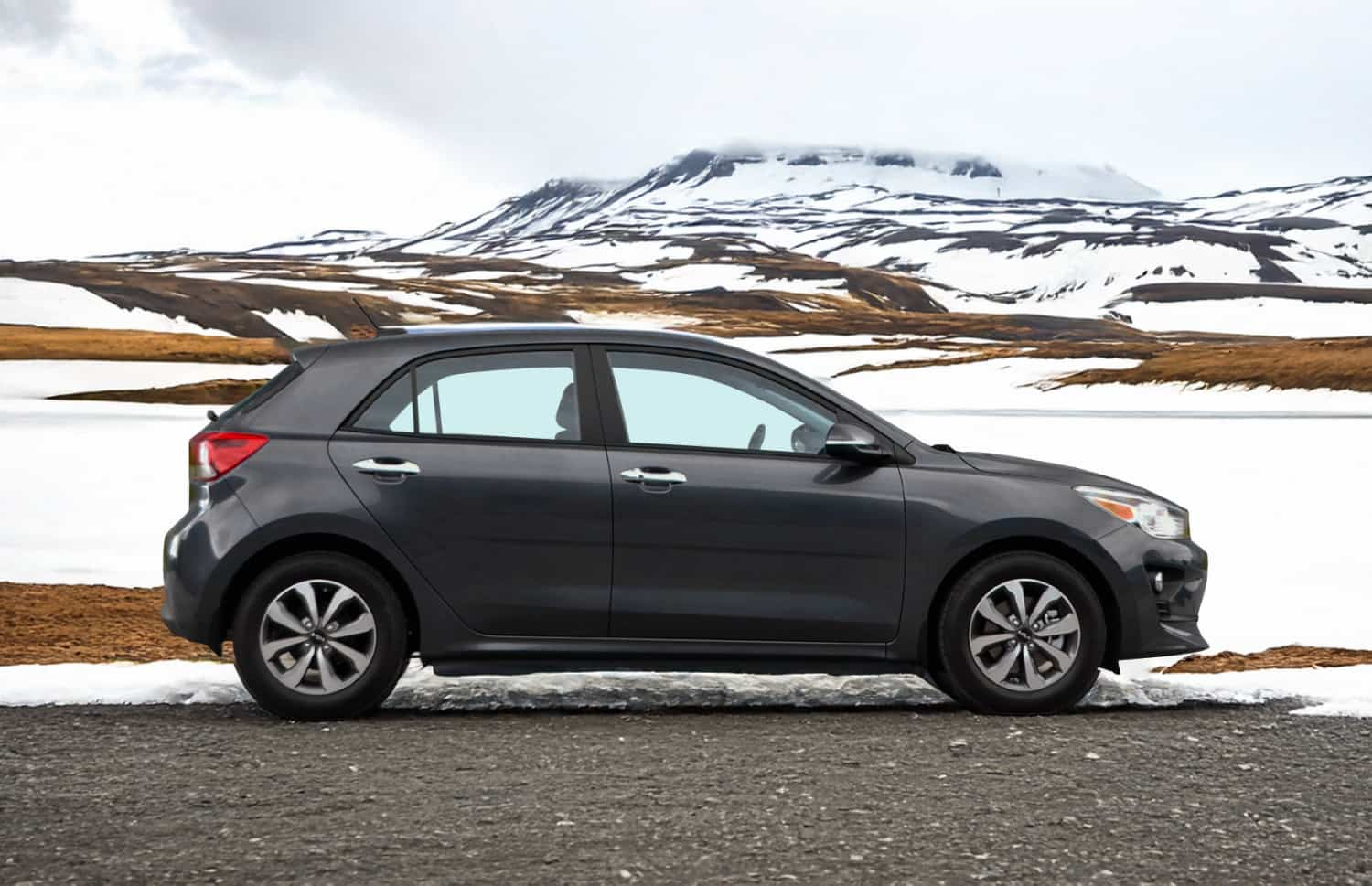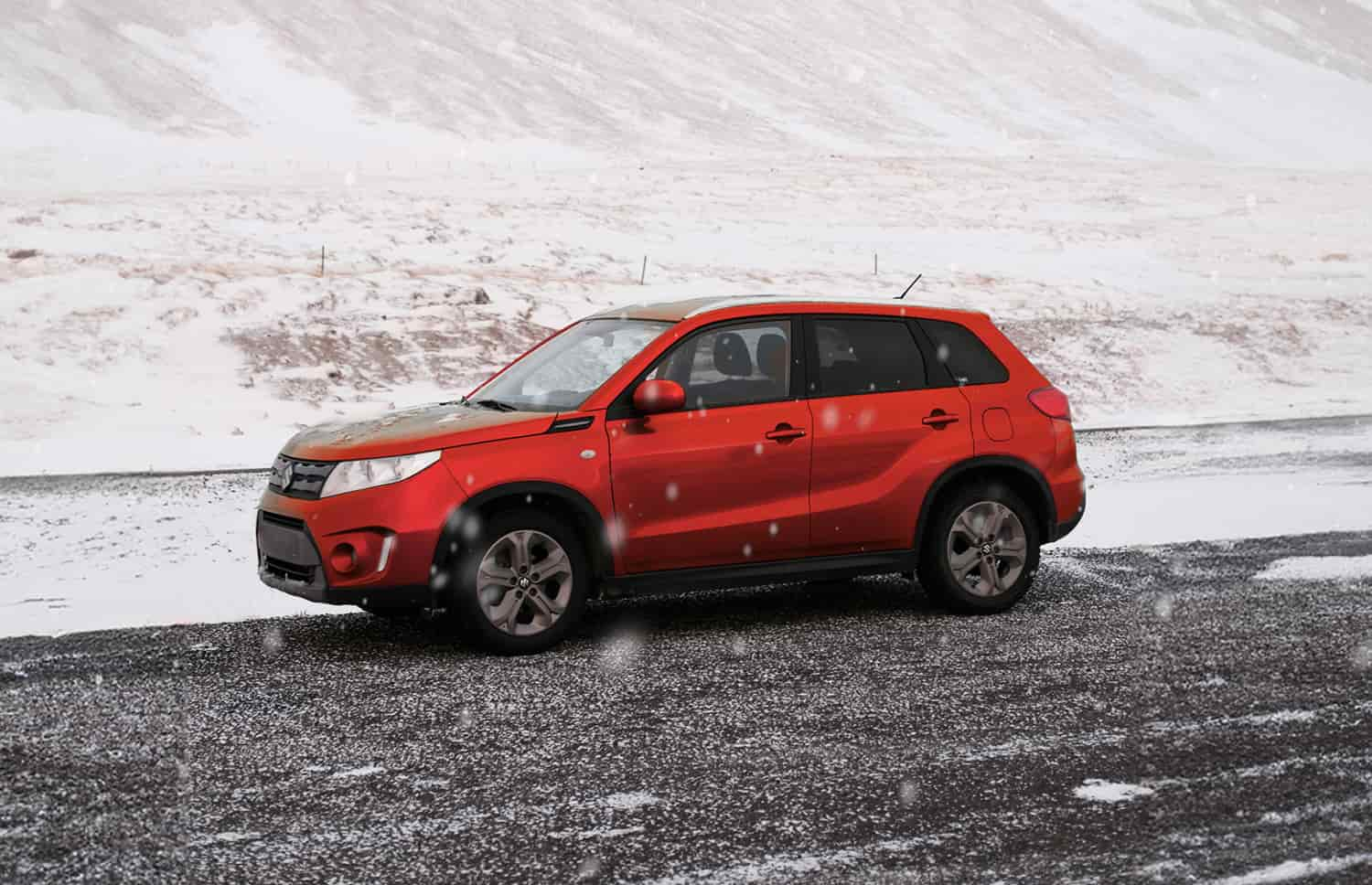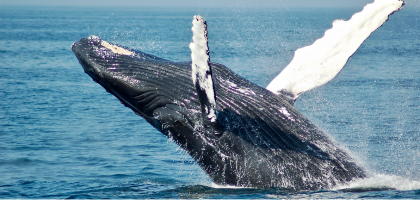As far as a country known for its volcanic activity goes, craters are probably the order of the day. But when it comes to Kerid Crater, it’s probably not what you envisioned. Here, you are met with a lake of bright blue-green water and vegetation surrounding the hole that almost seems like a (small) meteor crashed into the earth and caused it.
But it didn’t, and there’s a reason why the Kerid Volcano Crater and the memorable Kerid Crater Lake feature on so many tourist websites and brochures. Kerid Crater is not the norm, and this natural wonder is not just impressive for a variety of reasons but also very convenient to visit. Here’s what you need to know:
What Makes Kerid Crater So Impressive?
Firstly, this volcanic crater in Iceland is huge. It may look like a small meteor hit Earth, but even the smallest meteors are pretty big, and Kerid is an astounding 270 meters long, 170 meters wide, and 55 meters deep. Most will know it best by its most prominent feature: the bright blue-green water of Kerid Crater Lake that fills the bottom of the hole.
The lake itself is not too deep (between 7 and 14 meters depending on rainfall), and there’s a very good reason why (but more on that in a minute). The water may look inviting, but swimming is strictly forbidden. The water is actually freezing even at the height of summer, and there are no lifeguards to pull your hypothermic body out. You can, however, take a hike around the crater to admire the beautiful lake without risking your life.
How Was Kerid Crater Formed?
As with most things that occurred so long ago, there is some debate on exactly how Kerid was created, but the general consensus is that the cause was an eruption that happened roughly 6000 years ago. In typical eruption fashion, a crater was formed.
In a non-typical fashion, the magma chamber actually collapsed below the water level, allowing groundwater to seep through. That’s why the lake you see today tends to be so shallow. Even the color of the water is due to it being groundwater – the blue-green comes from minerals found in the soil and the rocks surrounding the crater.
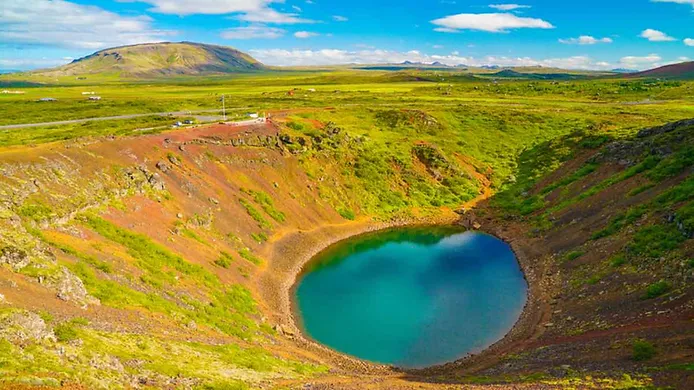
Where is Kerid Crater in Iceland?
Kerid Crater sits in the south of Iceland. It’s roughly 70 kilometers from our capital city, Reykjavik, and a mere 15 kilometers from Selfoss. So, if you’d like to make Kerid a day outing, you should probably depart from one of these towns. But many prefer to make the crater a stop along their road trip around the island, since it’s located so conveniently close to our famous Golden Circle route.
Getting to Kerid Crater in Iceland
You can essentially visit Kerid in one of two ways:
By Going on a Guided Tour
The entire island is full of tour operators and local guides who have existing tours with Kerid as a destination. These can range from dedicated day outings to multi-day holiday tours that include many other attractions and activities in Iceland. You can also make arrangements for a customized private tour.
By Driving Yourself
We prefer driving ourselves because one feels more immersed in the landscape by being at the wheel, and it also keeps you at the helm of your adventure by being in complete control of your time and trip itinerary.
Driving to Kerid is also not rocket science. Simply get on the Golden Circle and head towards Selfoss Waterfall. Once you’ve passed the waterfall, you can just continue north for a further 15 kilometers before you’ll find Kerid Crater lying just off Highway 35.
The Kerid Crater Hike
The Kerid Crater hike should rather be called the fun, leisurely Kerid Crater stroll because this hike is simply a well-maintained pathway that wraps around the crater’s inner circle, allowing you to explore the entire crater and get a view from all angles. The entire loop is just 1.4 kilometers long and doesn’t even have any extreme inclines, making it suitable for young and old.
How Long Does it Take to Climb Kerid Crater?
Once again, “climb” is a strong word. The walk around the entire crater will take between 20 to 40 minutes, depending on your pace and how often you stop along the way to admire the view or take a snapshot or two.
When is the Best Time to Visit Kerid Crater?
Although Kerid Crater is open all year round, this is the one attraction in Iceland that we highly recommend you visit during our summer season (June to September). This is not just because the summertime offers visitors the most daylight hours or the most amazing weather for their outdoor adventures, but also because Kerid doesn’t quite hit the same once the bright blue-green water freezes over.
And with Kerid suddenly turning into a desolate hole containing what appears to be a milky sheet of ice with a blanket of snow surrounding it all – well, not only does it not do justice to all those tourist brochures, but it can also be very slippery and wet, making the pathway and the rest of the area a safety concern.
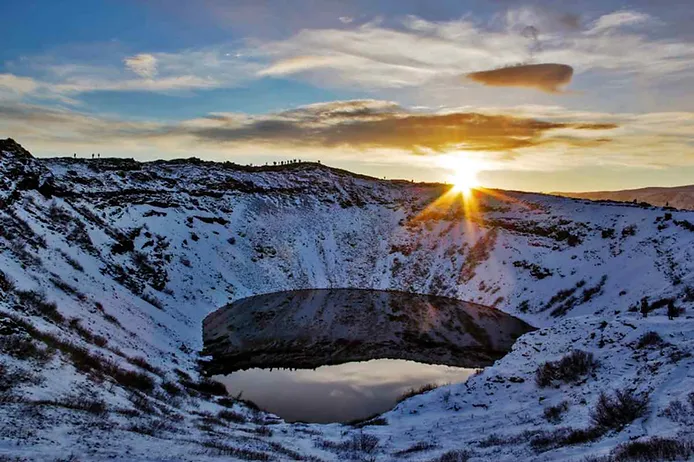
How Much Does it Cost to Visit Kerid Crater?
There is a small entrance fee at the crater, but it’s only 450 ISK (about $3.30), and the fee goes toward the conservation of the site. Parking at the crater is free.
Other Things to See and Do Near Kerid Crater
Kerid is not the only must-visit site in the area. So, if you’re doing a road trip or would like to extend your visit to the area, you should consider adding the following to your trip itinerary:
-
Geysir
-
Fridheimar Farm
-
Paradisarhellir Cave
-
Lake Laugarvatn
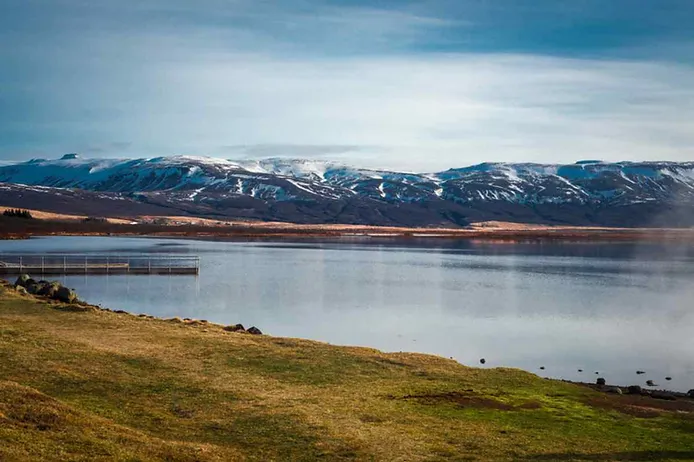
Places to Stay Near Kerid Crater
If you would like to stay for a night or two to explore the rest of what the area offers, you will find plenty of options to suit your personal preference and your pocket. Try Hotel Selfoss for a touch of luxury, or opt for Gesthus Selfoss for a comfortable yet affordable stay. Or take advantage of the most budget-friendly option in the area, Selfoss Hostel.
Is Kerid Crater Worth Visiting?
Overall, visiting Kerid Crater offers a unique and fascinating experience for those seeking to explore Iceland’s natural wonders. The stunning contrast of the bright blue-green lake against the vibrant red walls of the crater creates a mesmerizing sight.
Whether you’re a nature enthusiast, a photography buff, or simply a curious traveler, this geological marvel is sure to leave a lasting impression. So, what are you waiting for?Rent a car in Iceland so you can go on the ultimate Golden Circle road trip adventure, and add Kerid Crater as a stop along the way.




